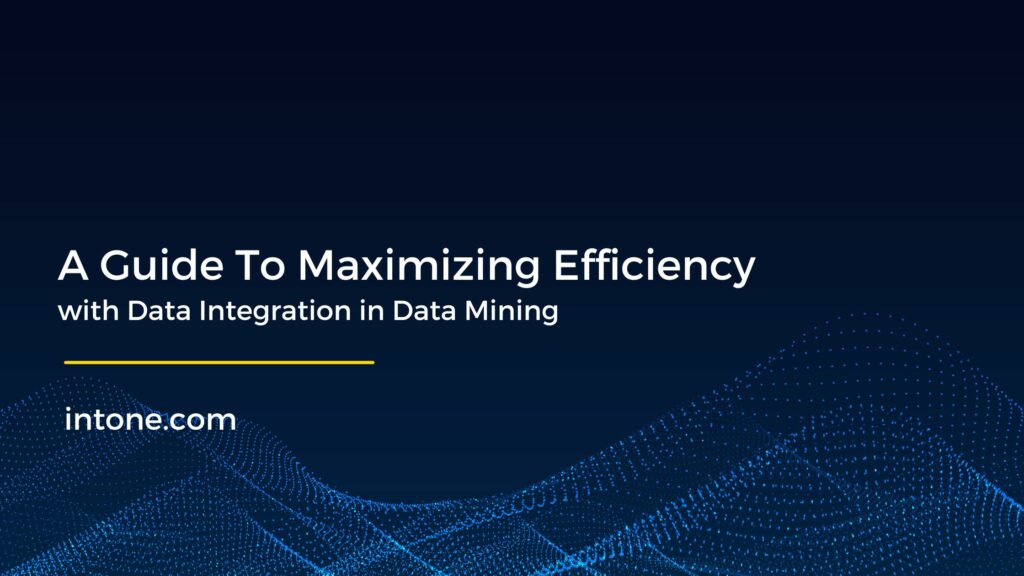Contents
The 21st century has brought with it the age of digital gold, where data drives globalization, innovation, and business success. Despite its critical role in decision-making, 66% of organizations lack a clear strategy for maintaining accurate and organized data. Many businesses also struggle to use the right technology for meaningful insights. According to Tech Jury, the average person generates 1.7 megabytes of data per second, contributing to the vast digital footprint of over 3.7 billion internet users worldwide. With every interaction online, data grows majorly, making data integration in data mining a necessity for businesses looking to stay ahead. Now is the time to use data effectively and turn it into a competitive advantage.
Understanding Data Integration in Data Mining
Data integration in data mining is the process of aggregating and harmonizing data from multiple heterogeneous sources to create a unified, consistent, and coherent view. These sources can include databases, data warehouses, data cubes, and flat files, among others. By integrating scattered data, businesses can enhance decision-making, improve analytics, and streamline operations.
Key Aspects of Data Integration in Data Mining
- The (G, S, M) Approach:
- G (Global Schema): Defines a standardized format for integrating data.
- S (Source Schema): Represents the various heterogeneous data structures.
- M (Mapping Schema): Establishes relationships between global and source schemas for smooth data retrieval.
- Data Extraction & Transformation: Raw data from different sources undergoes cleaning, formatting, and standardization to ensure compatibility.
- Schema Integration & Mapping: Data schemas from multiple sources are merged and aligned to maintain consistency across datasets.
- Data Loading & Consolidation: Transformed data is stored in a central repository (such as a data warehouse) for analysis and reporting.
- Handling Data Redundancy & Conflicts: Duplicate records, inconsistencies, and missing values are resolved through advanced data reconciliation techniques.
- Scalability & Performance Optimization: As data volumes grow, integration strategies must scale efficiently while maintaining fast query processing and real-time analytics.
By implementing a strong data integration strategy, businesses can unify fragmented data, improve analytical capabilities, and unlock valuable insights for better decision-making.
Data Integration Approaches
There are mainly two approaches to data integration – one is the “tight coupling” and another is the “loose coupling”
Tight Coupling
- In this method, a data warehouse is treated as an information retrieval component
- Data are combined from various sources into a single physical location via the process of ETL- Extraction, Transformation, and Loading
Loose Coupling
- In this method, users are provided an interface to input their queries and this interface then transforms it in a way that the source database can understand the queries and then send them directly to the source databases to obtain results
- In loose coupling, the data only remains in the actual source databases.
Issues in Data Integration
There are a few issues that you may encounter when you perform data integration in data mining.
1. Entity Identity Trouble
Since data is collected from heterogeneous sources, matching the real-world identities from the data becomes a problem. Analyzing the metadata information of an attribute prevents errors in schema integration.
2. Structural Integration and Functional Dependency
Ensuring that the functional dependency of an attribute in the source system and its referential constraints match with the functional dependency and referential constraint of the same attribute in the target system is a key aspect of effective data integration solutions. This alignment is instrumental in achieving structural integration.
3. Redundancy and Correlation Analysis
One of the big issues during data integration is redundancy. These redundant and unimportant data are no longer needed and can arise due to attributes that can be derived using another attribute in the data set.
The level of redundancy can also be raised by the inconsistencies in attributes and can be discovered using correlation analysis. Here, the attributes are analyzed to detect their interdependence on each other, thus being able to detect the correlation between them.
4. Triple Duplication
Data integration also has to deal with duplicated tuples, which may appear in the final dataset if a denormalized table is used as the source. Duplicate detection and resolution techniques, such as record linkage, entity resolution, and fuzzy matching, help eliminate redundancy and maintain data integrity. Additionally, data cleansing and deduplication algorithms ensure that only accurate and relevant data is retained for analysis, improving the overall reliability of integrated datasets.
5. Data Conflict Detection and Resolution
Data conflict happens when the data merged from various sources do not match. This could be caused by varying attribute values in different data sets. It could also be caused by different representations in different data sets. Issues such as this are meant to be detected and resolved in data integration.
Also read, why should we adopt Data integration in healthcare & Data integration in Insurance
Why Choose Intone Data Integrator (IDI)?
The data integration market is projected to reach $19.6 billion by 2026, growing at an 11% CAGR from $11.6 billion in 2021. With just a 1% increase in data visibility, Fortune 1000 companies could gain $65 million+ in additional income. Intone Data Integrator (IDI) is a cutting-edge solution designed for seamless data management and integration. Trusted by industry leaders, IDI offers end-to-end encryption, centralized password management, real-time and batch processing, 600+ data connectors, lineage tracking, in-memory operations, and an intuitive monitoring module. Built as a no-code, low-code platform, IDI simplifies complex integrations, ensuring efficiency, security, and scalability. Ready to optimize your data strategy? Explore IDI today to transform your business.
Check out how Intone can help you streamline your manual business process with Robotic Process Automation solutions.

